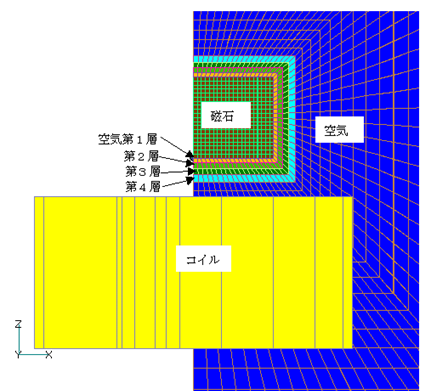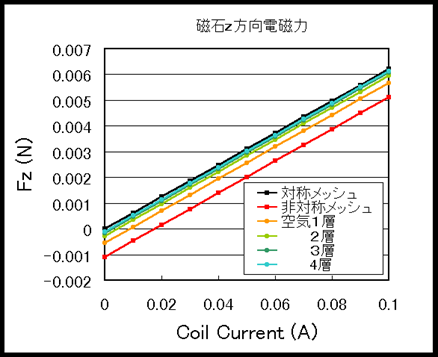Improvement of electromagnetic force analysis
- TOP >
- Analysis Examples by Functions (List) >
- Improvement of electromagnetic force analysis
Summary
As mentioned in "Problems with Electromagnetic Force Analysis", even when the electromagnetic forces are in equilibrium, there are cases where a significant total electromagnetic force is calculated as an error. In "Problems with Electromagnetic Force Analysis," the problem can be improved by using a symmetrical mesh, but it is often difficult to create such a mesh. One way to improve this is to extend the nodal force not only over the object on which the electromagnetic force acts, but also over the air region including the object, and to accumulate the nodal force.
Explanation
Please download and refer to the "Sample Data" at the end of this page.
This is the case when calculating the total electromagnetic force or torque. As for the background of this problem, please see "Nodal Force Method vs. Maxwell’s Stress Method". We will confirm this with the same model used in "Problems with electromagnetic force analysis issue".
As shown in Fig. 1, the nodal force accumulation region is extended outward. Fig. 2 shows the coil current dependence of the electromagnetic force when extended to each layer. As can be seen, even when the mesh is asymmetrical vertically, the accuracy improves dramatically if the mesh is extended to the fourth layer. The question is how far to extend the mesh, but it can be considered in the same way as the Maxwell stress method, in this case to the center of the coil and the magnet.
Starting with r8.1, nodal forces can be accumulated and output over an area that includes air. When using this function, define the air region to be accumulated as a separate property. This region must be defined as the total potential region.
The rest of this page is for members only.
Analysis Examples by Functions
Electromagnetic force
©2020 Science Solutions International Laboratory, Inc.
All Rights reserved.




